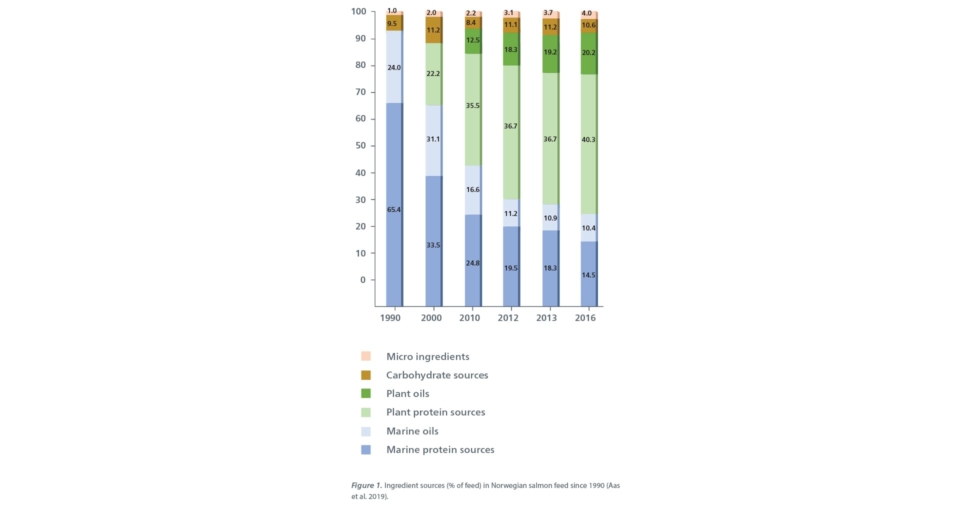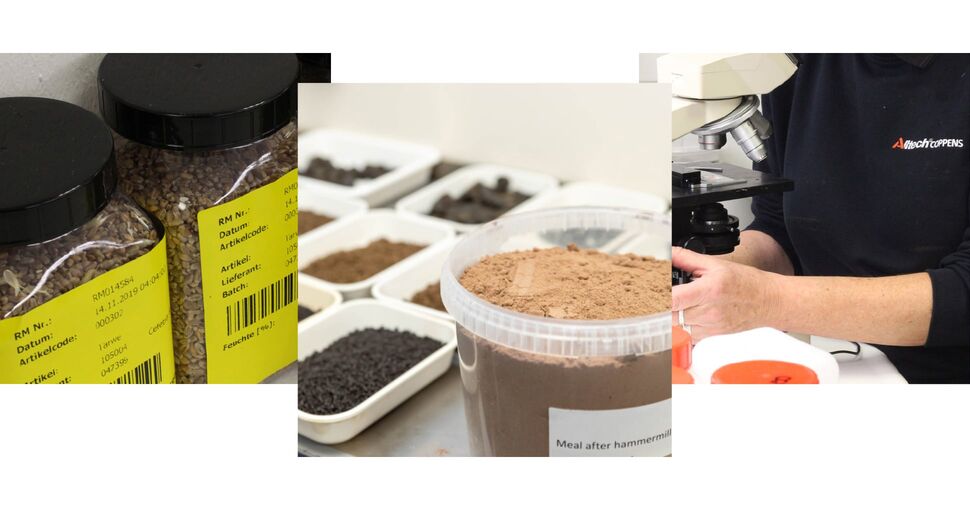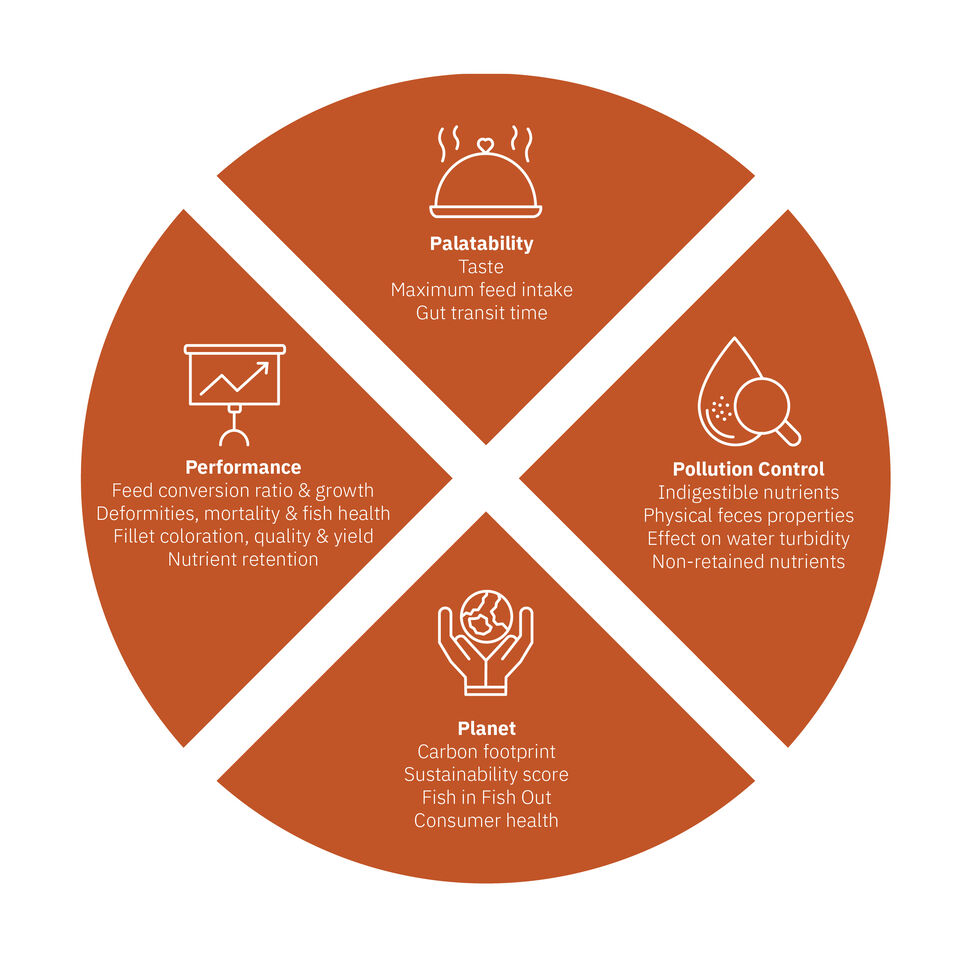
Aquafeeds have evolved quite considerably over the years, mainly in the use of raw materials.
A good example of this is salmon feed in Norway, which in 1990 was predominantly based on marine protein and oil sources, mainly fish meal and fish oil respectively.

Greater demand
Aquafeeds have evolved quite considerably over the years, mainly in the use of raw materials. A good example of this is salmon feed in Norway, which in 1990 was predominantly based on marine protein and oil sources, mainly fish meal and fish oil respectively. Nowadays such feeds are largely based on plant protein and oil sources. The main driver of this change in raw materials used in aquafeeds is the limited availability of marine raw materials that are currently derived from capture fisheries. The primary reason for this is that the growth of global capture fisheries has remained stagnant since the mid-1980s whilst aquaculture and the demand for protein sources has only risen. In turn this has created a greater demand for alternative protein sources for aquafeeds.

Subsequently, much of the research conducted at the Alltech Coppens Aqua Centre (ACAC) has also concentrated on working towards independency of marine resources in aquafeeds and evaluating the nutritional potential of new raw materials.
The first step will often involve conducting background research on what data is already available for a given raw material, for instance checking whether raw material suppliers can already provide research data, or whether information is available in the published scientific literature. It is only when a new raw material is deemed interesting for use in production and there is not enough information available that the decision is made to conduct further testing at the ACAC.

When raw materials are tested in the ACAC, they are firstly tested for their nutritional quality: fish performance and health, digestibility, feces quality, maximal feed intake, etc. All this information is required for using these new raw materials in the feed formulation. In addition to the nutritional evaluation of new raw materials, evaluation is also performed on other aspects. One example that is sometimes overlooked, but which is also very important is how well it can be used in the extrusion process. A raw material can be nutritionally very interesting but might present challenges in feed production. Another aspect currently garnering more and more attention and which is of vital importance is sustainability. Thus, how sustainable a new raw material is, for example in terms of carbon footprint.
4 P's
A final evaluation of new raw materials is therefore made based on the 4 P's (Performance, Pollution, Palatability and Planet) before it will be used in the feed production. As long as aquaculture production continues to grow the search for new alternative raw materials will keep pace with the development of the industry. Over the last years we have already seen some big shifts, for instance the use of land animal by products (like poultry by product meal, hydrolysed feather protein meal and bloodmeal) which were again permitted for use in aquafeeds in 2013, and more recently insect meal has been allowed for use in aquafeeds since 2017. Another upcoming group of raw materials seems to be single cell or bacterial protein sources. An advantage of these new alternative protein sources is that they do not compete with land for food production like for example soya does. However, price and availability still remain an issue with these newer alternative protein sources.

